The power and beauty of Mother Nature communicates with us in mysterious ways. So often, we are captured in the moment – in silence; we behold its magnitude and grandeur. Yet, nature’s physical and non-physical essence is a source of eternal creativity.
The dramatic, undulating profile of Bali’s volcanic skyline inspires emerging artist Kadek Didin Junaedi. Colour, form and texture speak through him into an array of three, and recently, two-dimensional expressions. The outcomes are fresh and contemporary, setting him apart from his peers. Yet, the origins of Didin’s techniques are rooted in the past and his Balinese traditions.
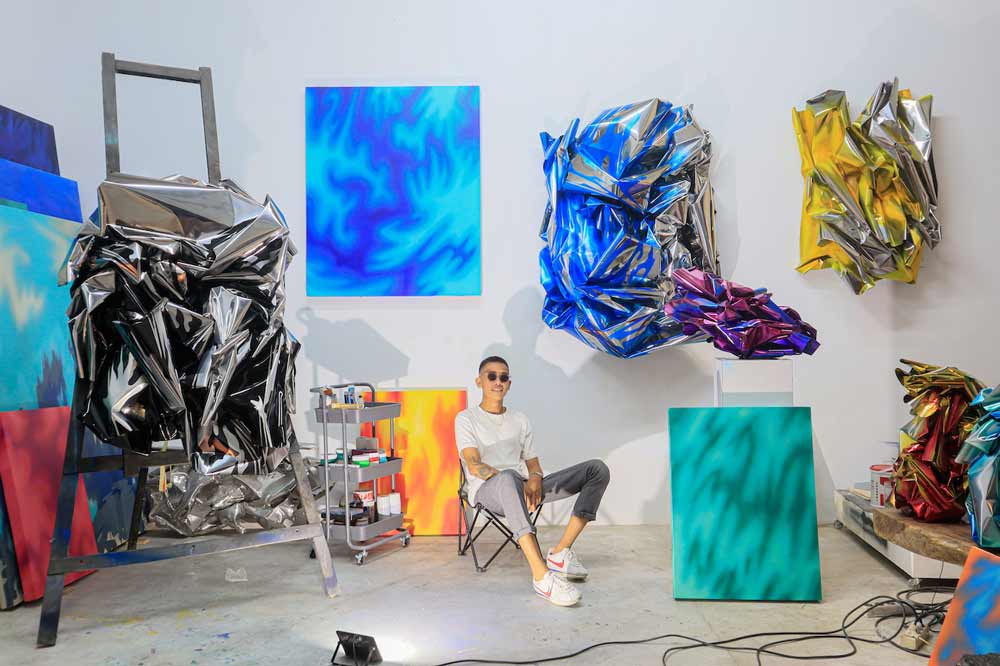
Balinese art has thrived over the centuries due to the handing down of knowledge through the generations. Didin grew up in a household of woodcarvers. His father is a traditional wood sculptor. As a child, he began developing his skills, following in his predecessor’s footsteps. Didin, however, went on to choose an alternative path. Now at the age of twenty-four, this exciting artist is forging a new direction in contemporary Balinese art.
Passionate about trekking the mountainous regions of Bali, Didin often seeks the sanctuary of nature. The experience of traversing from the lower to the higher grounds, infused with his acute observation and contemplative senses, translated into captivating representations of folded and dented stainless steel plates enhanced by dazzling colours. His dynamic compositions are organic explosions. In addition, the gleaming polished steel surfaces contribute a unique sci-fi galactic element making his works appear ultra-modern and otherworldly.
“My creative process is intuitive; an unquestionable and objective expression of my feelings in response to the landscape,” Didin revealed. “I adopt a ceremonial approach to this activity. Each of my ascents into the highlands triggers potent sensations. I make silent prayers and commune with nature and myself on the deepest level. It is an experience that I have difficulty describing. For example, the colours I chose to work with have no special explanation.” His Artist Statement says, “My art is a ritual procession of self-introspection in finding faith and spirituality.”
Didin’s incessant curiosity instructs his creative journey. Starting from the practical experiences across various disciplines leading him to explore a broader understanding of the art form via personal and formal education. While at the High School of Visual Arts in Sukawati (2013-2016), he worked in the mediums of wood and concrete, forging figurative sculptures with realist features and more expressive abstractions of the human form.
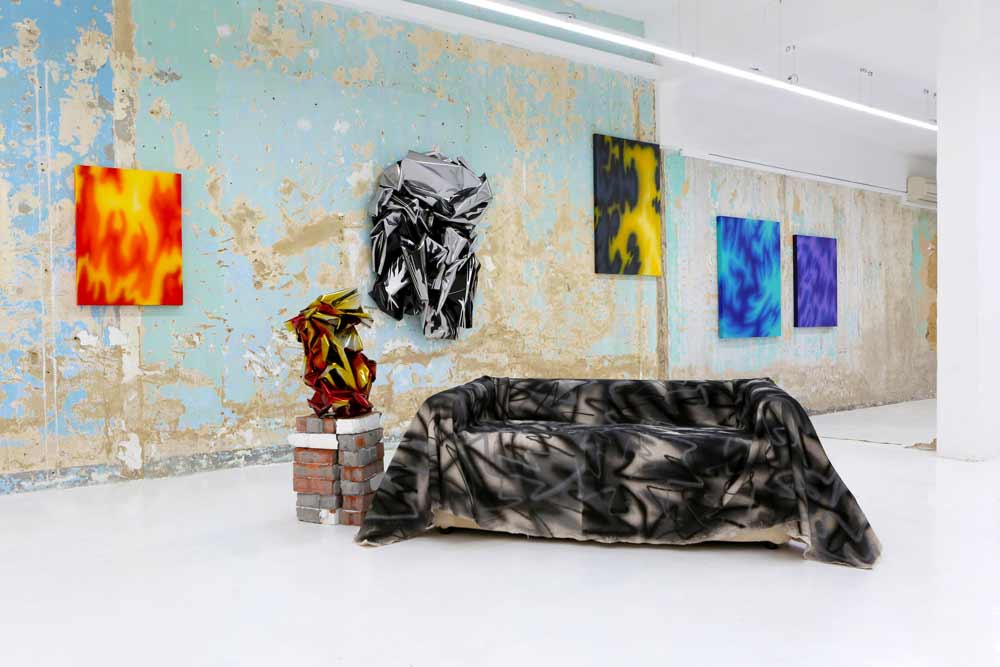
Driven to pursue a career in the fine arts, Didin pursued his education outside of Bali. In 2016 began studying at the prestigious Indonesian Art Institute (ISI) in Yogyakarta, Java. The academy has been an instrumental learning environment inspiring the development of Balinese contemporary art, beginning back in the 1970s. Living in Yogyakarta exposed him to vast new horizons. His new lifestyle freed him from the communal responsibilities of the traditional village structures. In contrast, the Javanese art world is unlike Bali.
Yogyakarta is a significant hub of Indonesian education, attracting youth from throughout the archipelago. The atmosphere is dynamic, vast and progressive. The creative scenario has its own traditional and historical distinctions, with roots similar to Bali. During the Indonesian contemporary art boom of 2006-2008, circumstances evolved, allowing the development of an art ecosystem dissimilar to Bali’s underdeveloped art infrastructure, which was overly dependent upon tourism at the time.
Didin met leading artists and could access their studios. One of the nation’s leading sculptors, Ichiwan Noor, became his teacher and inspiration. During this time, Didin began exploring his ideas with aluminium plates. Introduced to an exciting new learning atmosphere, his roots, however, remained distinctly Balinese. “I believe the Balinese traditional arts must be increasingly advanced and new understandings determined,” he told me.
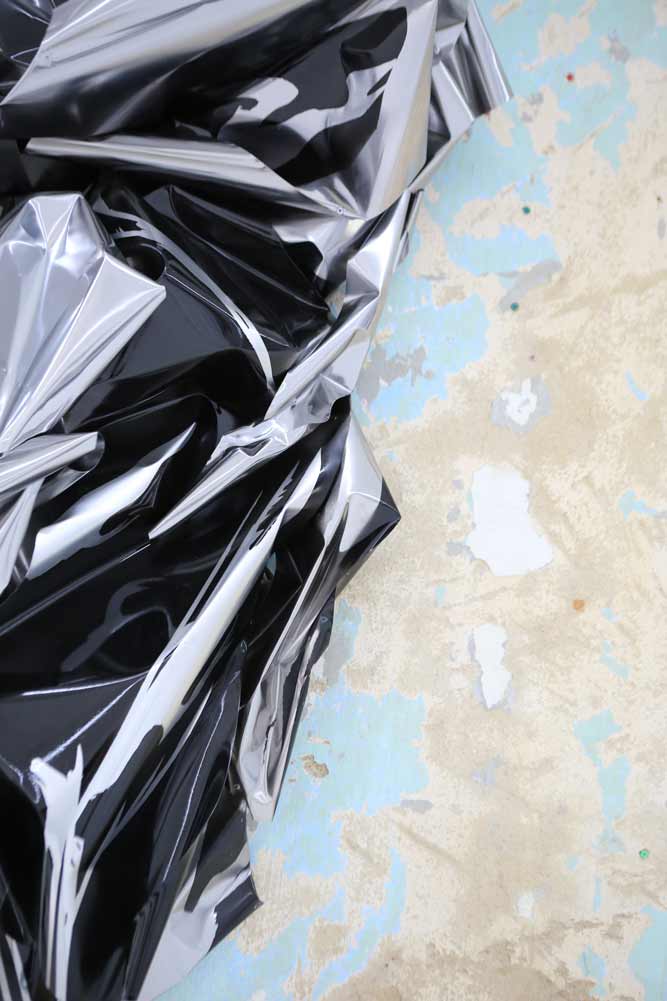
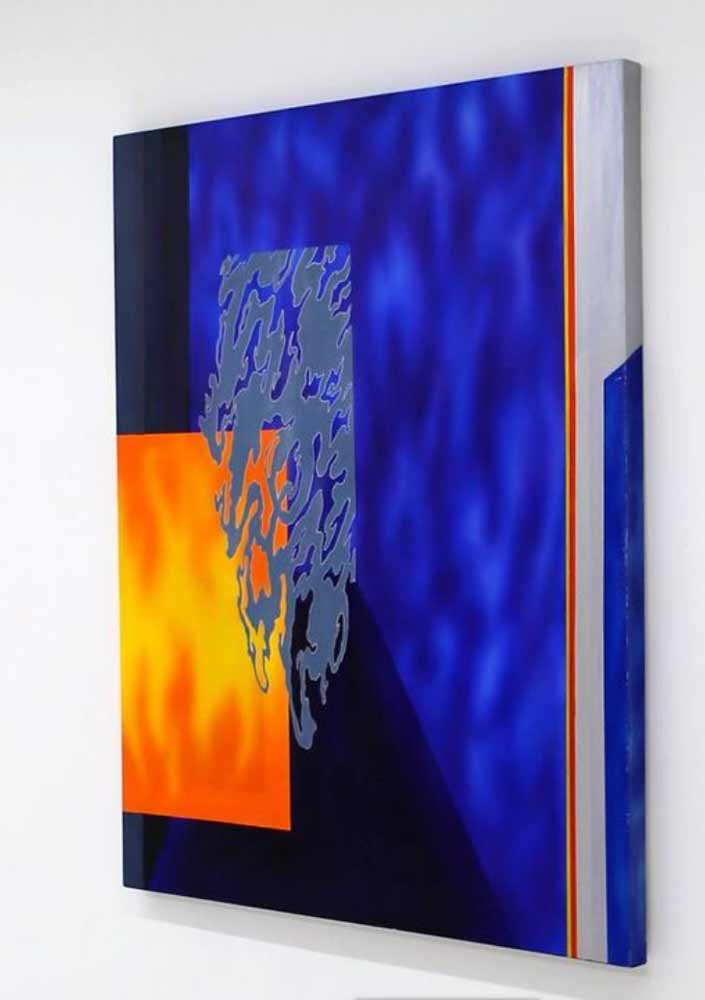
“Contemporary art is my bridge to examine the aesthetics of Balinese art by maintaining existing concepts and presenting them within a fresh context aided by my traditional skills,” said the artist, born near Ubud in 1998. “My sculptures are inspired by the intricate traditional hand techniques tetuwesan and jejahitan used to make Banten, Balinese ceremonial offerings. The skills are applied abstractly, reconfiguring 2D plates into representations of the three dimensions of nature. I associate my thoughts and feelings with the Balinese Yadnya ceremony during this process. Subtractive and additive principles are the sources of my ideas. I fold, bend and roll the flat material, creating dimensions and volume with positive and negative spaces.”
During the pandemic, Didin required answers to the challenge of sourcing materials for his sculptures. His solution was to explore his aesthetics in the 2D form. He began painting abstract images that mirror the visual aspects of his 3D works. Spraying acrylic paint upon plains of dynamic, often contrasting colour, he achieved similar yet flat visual forms which characterise the folds in the aluminium plates. Using shades of grey and blues with other potent colours, he succeeded in creating compelling compositions with an undeniable likeness.
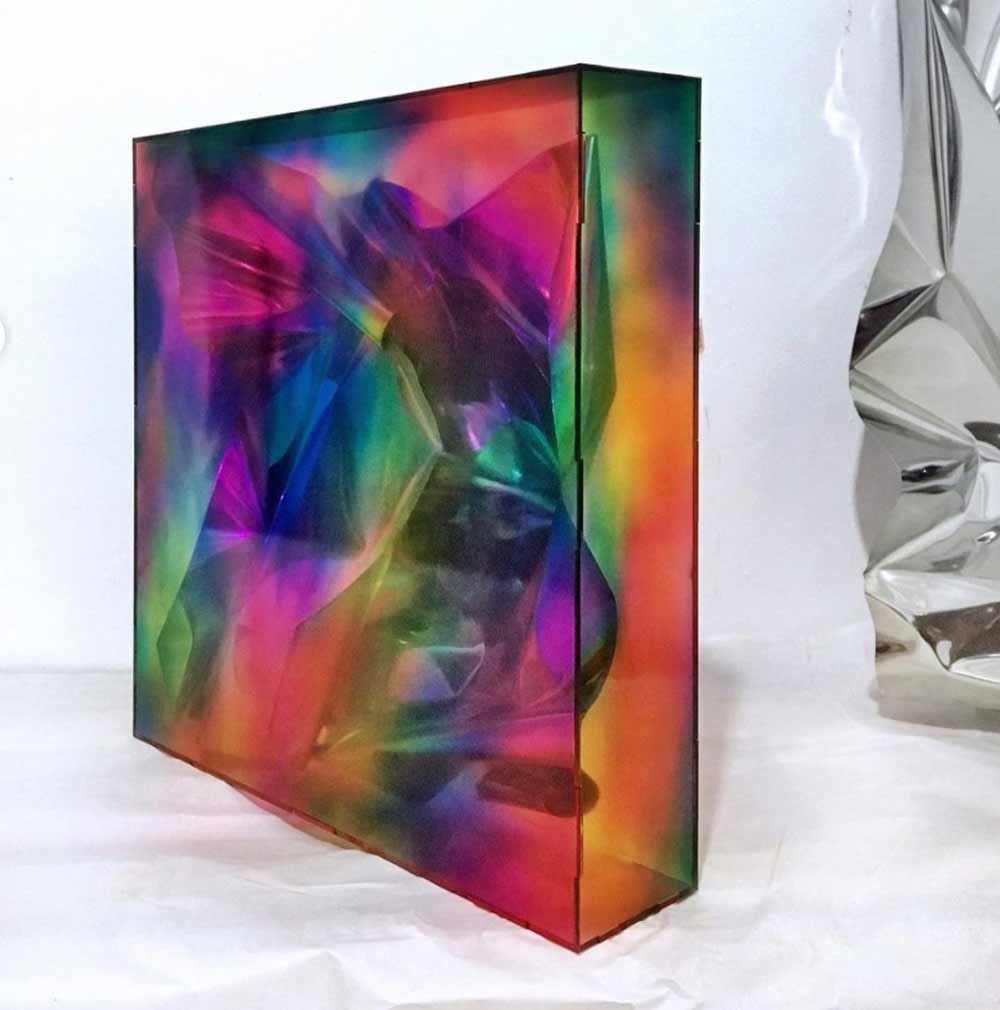
“I have an obsession with the ultramarine blue,” Didin stated. “This colour gives strength to
belief, becoming a potent space of possibility. Blue gives me trust and is a psychological symbol of hope.”
Through April-May 2022, Didin is featured in ‘Stop Making Sense’, an exhibition of seven emerging international artists from SE Asia and South America and at Hatch Art Projects, Singapore. The exhibition pieced together various materials and expressive approaches while highlighting the aesthetic potency of Didin’s works created during 2020-2022. Furthermore, in recognition of his homage to the natural environment in May 2022, Didin was awarded the JAPFA’S Artist of the Year. JAPFA empowers young artists inspired by Asian habitats and landscapes and is supported by the Edufarmers Foundation. The foundation aims to increase the productivity, income and livelihoods of small farmers in Indonesia.
Didin, who has exhibited in galleries and art fairs in Jakarta, represents the exciting avant-garde of Balinese art. He lives between his family home in Gianyar, Bali and Yogyakarta where he is continuing his art education.
Follow Didin on Instagram: @didinjirot_






